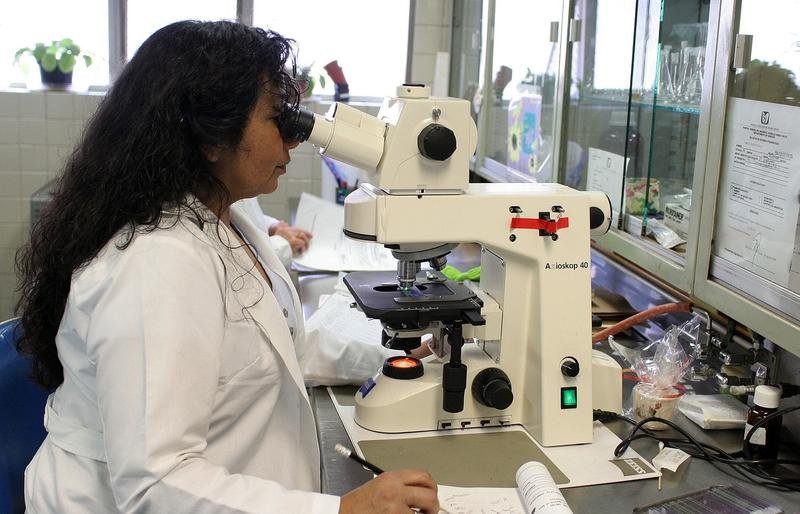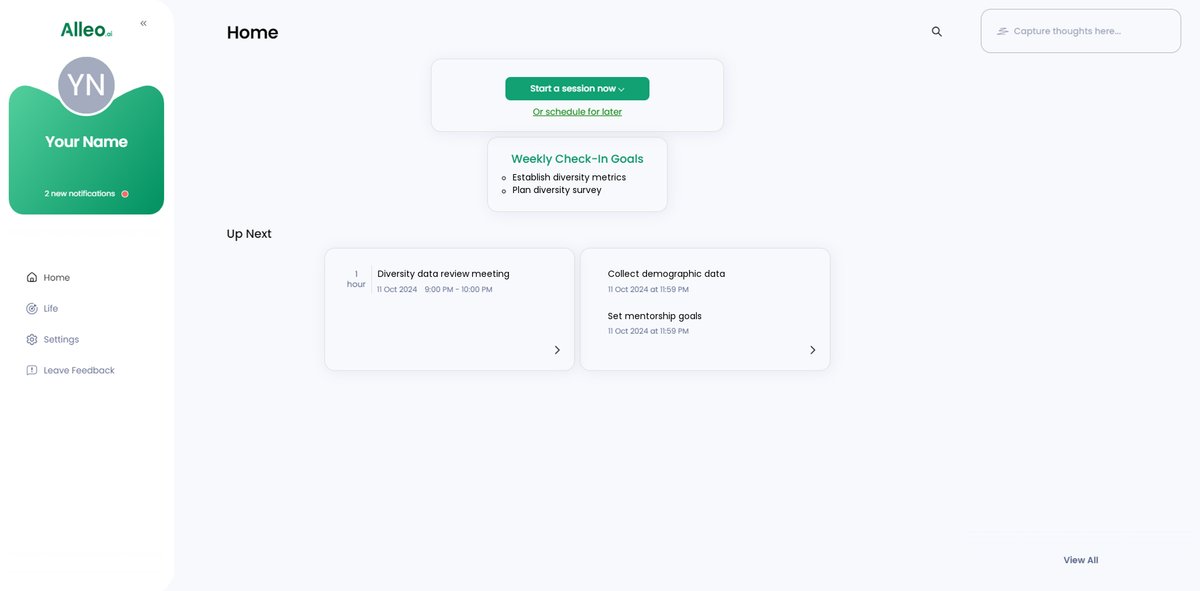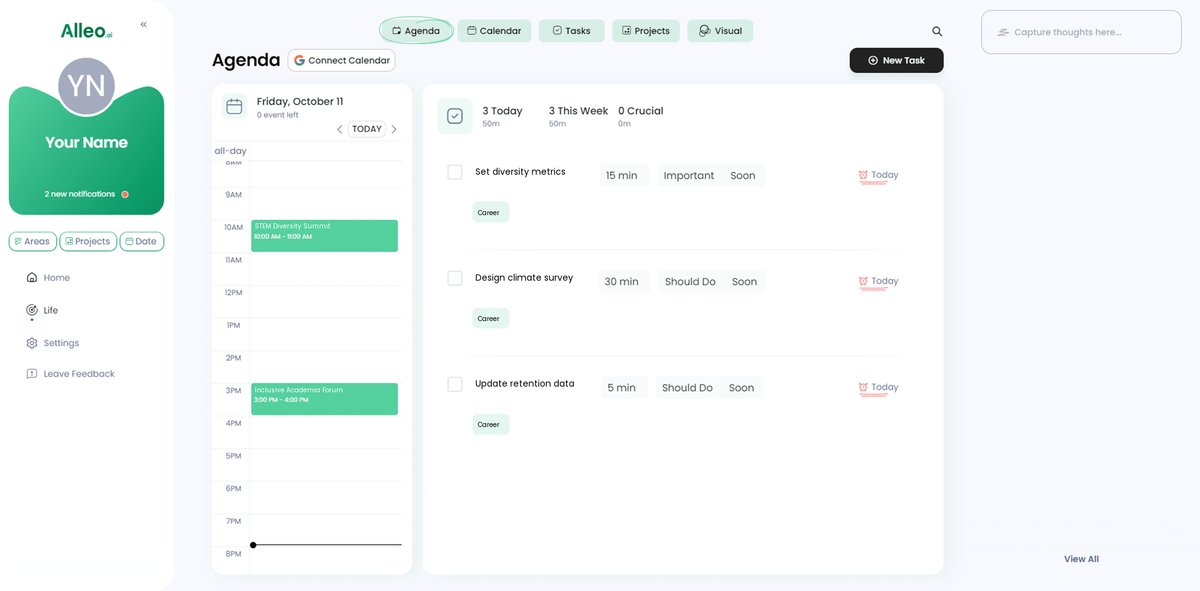6 Proven Strategies for Measuring Diversity Initiatives in STEM Academia
Imagine a world where every student and professional in STEM feels seen, supported, and empowered, creating truly inclusive academic environments.
As a life coach, I’ve helped many professionals navigate these challenges. In my experience, finding the right strategies for measuring STEM diversity initiatives can be transformative, especially when it comes to improving retention rates of minority students in STEM.
In this article, you’ll discover concrete strategies for measuring diversity initiatives in STEM academia. We’ll cover specific diversity metrics in higher education, surveys, and equity assessment tools for STEM departments to track progress and ensure success in creating diverse and inclusive environments.
Let’s dive into the world of measuring STEM diversity initiatives and explore how they can enhance gender equality in academia and racial diversity in science programs.

Understanding the Challenges in Measuring Diversity Initiatives
Let’s talk about the real obstacles in measuring STEM diversity initiatives. Many clients initially struggle with inconsistent data collection and unclear diversity benchmarks for universities.
Moreover, the lack of reliable diversity metrics in higher education can hinder progress. It’s hard to demonstrate success or pinpoint areas needing improvement without solid metrics for measuring inclusion effectiveness.
The impact on underrepresented groups in STEM is significant. Poorly measured initiatives can lead to frustration and feeling unsupported in inclusive academic environments.
In my experience, people often find the emotional toll overwhelming. This can affect their professional growth and retention rates of minority students in STEM fields.
Addressing these issues is crucial for STEM faculty recruitment strategies and gender equality in academia. Let’s explore some actionable strategies to tackle them.

A Roadmap to Effective Diversity Measurement in STEM Academia
Overcoming this challenge requires a few key steps. Here are the main areas to focus on to make progress in measuring STEM diversity initiatives:
- Establish quantitative diversity metrics: Track demographics to set benchmarks and measure progress in diversity metrics in higher education.
- Implement regular diversity climate surveys: Collect anonymous feedback to understand inclusivity and assess inclusive academic environments.
- Track retention rates: Monitor underrepresented groups in STEM retention to assess initiative success and measure inclusion effectiveness.
- Analyze promotion rates: Ensure equitable career advancement opportunities and gender equality in academia.
- Monitor research team diversity: Record team demographics to promote diverse compositions and enhance racial diversity in science programs.
- Evaluate mentorship programs: Assess mentorship effectiveness to foster a supportive environment and improve STEM faculty recruitment strategies.
Let’s dive in!

1: Establish quantitative diversity metrics
Establishing quantitative diversity metrics is crucial for measuring STEM diversity initiatives and tracking progress in higher education.
Actionable Steps:
- Collect demographic data of applicants, students, and faculty consistently, including underrepresented groups in STEM.
- Benchmark metrics against industry standards and historical data for STEM faculty recruitment strategies.
- Regularly update metrics to align with current diversity goals and measure inclusion effectiveness.
Explanation: These steps are vital because they provide a clear picture of diversity progress in inclusive academic environments.
By comparing metrics to industry standards, you can identify gaps and areas for improvement in racial diversity in science programs.
Regular updates ensure that your goals remain relevant and impactful for gender equality in academia.
Key benefits of establishing quantitative diversity metrics:
- Provides objective data for decision-making on equity assessment tools for STEM departments
- Helps identify trends and patterns over time in retention rates of minority students in STEM
- Enables comparison with peer institutions using diversity benchmarks for universities
Taking these steps will set a solid foundation for your diversity initiatives in measuring STEM diversity initiatives.

2: Implement regular diversity climate surveys
Understanding the lived experiences of students and faculty is essential for effective diversity initiatives in STEM. Regular surveys are crucial for measuring STEM diversity initiatives and creating inclusive academic environments.
Actionable Steps:
- Develop and distribute anonymous surveys focusing on inclusivity, belonging, and satisfaction, particularly for underrepresented groups in STEM.
- Use survey feedback to identify patterns and areas for improvement in diversity metrics in higher education.
- Share survey results transparently with the community and use them to inform policy changes and STEM faculty recruitment strategies.
Explanation: These steps matter because they provide crucial insights into the environment’s inclusivity. Survey feedback can highlight specific areas needing attention, leading to actionable improvements in measuring inclusion effectiveness.
Sharing results transparently builds trust and fosters a collaborative atmosphere. For example, implementing regular surveys has been shown to improve equity, diversity, and inclusion (EDI) in research practices, addressing issues of gender equality in academia and racial diversity in science programs.
Regularly assessing the climate ensures continuous progress and engagement from all community members, helping establish diversity benchmarks for universities and improve retention rates of minority students in STEM.

3: Track retention rates of underrepresented groups
Tracking retention rates of underrepresented groups is vital to gauge the success of diversity initiatives in STEM and measure the effectiveness of inclusion efforts.
Actionable Steps:
- Monitor retention rates annually: Break down data by different demographic groups, focusing on equity assessment for STEM departments.
- Analyze reasons for attrition: Conduct exit interviews and follow-up surveys to understand challenges faced by minority students in STEM.
- Implement targeted support programs: Provide academic advising and peer mentoring to improve retention, contributing to inclusive academic environments.
Explanation: Tracking retention rates highlights the effectiveness of diversity efforts in measuring STEM diversity initiatives.
Analyzing this data helps identify and address challenges faced by underrepresented groups in STEM, aiding in the development of diversity benchmarks for universities.
For more details on persistence and retention, visit this link.
Implementing these steps ensures continuous improvement and support for all students, contributing to gender equality in academia and racial diversity in science programs.
Next, we’ll explore analyzing promotion rates across demographics.

4: Analyze promotion rates across demographics
Analyzing promotion rates across demographics is crucial to ensure equitable career advancement in STEM academia and is a key component of measuring STEM diversity initiatives.
Actionable Steps:
- Track promotion rates annually: Collect demographic data of promotions by gender, race, and other key metrics to assess diversity metrics in higher education.
- Review promotion criteria regularly: Ensure fairness by evaluating and updating promotion processes and criteria, supporting inclusive academic environments.
- Offer targeted professional development: Provide workshops and mentorship programs focused on underrepresented groups in STEM aiming for promotion.
Explanation: These steps are essential because they highlight areas where disparities may exist and help address them. Regular tracking and reviewing ensure fairness and transparency, contributing to gender equality in academia and racial diversity in science programs.
Targeted programs support professional growth for underrepresented groups. For more insights, explore the Faculty Diversification Fellowship program.
Key factors to consider when analyzing promotion rates and measuring inclusion effectiveness:
- Time in position before promotion
- Publication and grant success rates
- Teaching and service contributions
Analyzing promotion rates helps create a more inclusive and supportive academic environment and is crucial for measuring STEM diversity initiatives.
Next, let’s examine how to monitor diversity in research teams.

5: Monitor diversity in research team compositions
Monitoring diversity in research team compositions is essential for fostering innovation and inclusivity in STEM academia, and is a crucial aspect of measuring STEM diversity initiatives.
Actionable Steps:
- Record demographic data: Collect and track demographic information for all research team members, utilizing diversity metrics in higher education.
- Promote inclusive hiring practices: Ensure diverse team compositions by adopting inclusive hiring practices and offering funding incentives, aligning with effective STEM faculty recruitment strategies.
- Evaluate research outcomes: Regularly assess the impact of team diversity on research success and publication rates, contributing to the creation of inclusive academic environments.
Explanation: These steps are vital for creating diverse and innovative research teams and supporting underrepresented groups in STEM.
Tracking demographics helps identify gaps, while inclusive hiring ensures broad representation, promoting gender equality in academia and racial diversity in science programs.
Evaluating outcomes highlights the benefits of diversity and aids in measuring inclusion effectiveness. For more details, check out the Faculty Diversification Fellowship program.
Next, let’s examine how to evaluate the effectiveness of mentorship programs, which can serve as valuable diversity benchmarks for universities.

Leverage Alleo to Enhance Your Diversity Initiatives
We’ve explored the challenges of measuring STEM diversity initiatives in academia. Now, discover how Alleo can simplify this journey for creating inclusive academic environments.
Setting up an account with Alleo is quick and easy. Create a personalized plan tailored to your diversity goals, including STEM faculty recruitment strategies and equity assessment tools for STEM departments.
Alleo’s AI coach will guide you through collecting diversity metrics in higher education, conducting surveys on gender equality in academia, and tracking retention rates of minority students in STEM and promotion rates.
You’ll receive regular progress updates on measuring inclusion effectiveness, and Alleo will keep you accountable with text and push notifications. The coach will also adjust strategies based on feedback and results, helping you establish diversity benchmarks for universities.
Ready to get started for free and improve racial diversity in science programs? Let me show you how!
Step 1: Log In or Create Your Account
To begin measuring diversity initiatives in STEM academia, log in to your account or create a new one to access Alleo’s AI coach and personalized diversity tracking tools.

Step 2: Choose Your Diversity Initiative Focus
Select the specific diversity initiative you want to improve, such as establishing quantitative metrics or implementing climate surveys, to tailor your AI coaching experience and make measurable progress in creating a more inclusive STEM environment.

Step 3: Select “Career” as Your Focus Area
Choose “Career” as your focus area to address diversity challenges in STEM academia, allowing Alleo’s AI coach to provide tailored strategies for improving diversity metrics, retention rates, and mentorship programs in your professional environment.

Step 4: Starting a coaching session
Begin your journey with an intake session to discuss your STEM diversity goals and create a personalized plan for measuring and improving initiatives using our AI coach.

Step 5: Viewing and managing goals after the session
After your coaching session on measuring diversity initiatives in STEM, access your personalized goals directly from the Alleo app’s home page, where you can easily track and manage your progress towards creating a more inclusive academic environment.

Step 6: Adding events to your calendar or app
Use Alleo’s calendar and task features to easily schedule and track diversity-related events, surveys, and metrics collection, helping you monitor progress and stay accountable to your STEM diversity initiatives.

Bringing It All Together: Your Path to Measuring Diversity in STEM
In conclusion, measuring STEM diversity initiatives in academia is both challenging and essential. We’ve explored actionable strategies to help you make significant progress in creating inclusive academic environments.
By establishing diversity metrics in higher education, conducting surveys, tracking retention rates of minority students in STEM, and analyzing promotions, you can create a more inclusive environment. Monitoring research team diversity and evaluating mentorship programs further enhance your efforts to support underrepresented groups in STEM.
Remember, you don’t have to do this alone. Alleo can be your partner in this journey, offering tools and support every step of the way to improve STEM faculty recruitment strategies and gender equality in academia.
By leveraging these strategies and utilizing Alleo, you can transform the landscape of STEM academia. Let’s make a difference together in improving racial diversity in science programs and measuring inclusion effectiveness.
Ready to get started with diversity benchmarks for universities? Try Alleo for free today and explore our equity assessment tools for STEM departments.